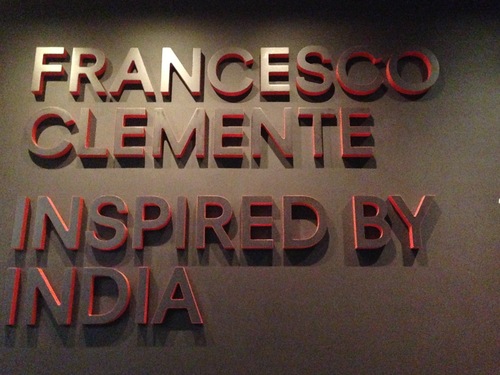Seeking the Sacred at the Rubin Museum, NYC
March 17, 2015
Christina A. Barber, Cohort ’13
Himalayas: Pakistan, India, China (Tibet), Nepal and BhutanIt was the first week of January and the air was crisp in New York City. Navigating the city with fourteen PhD students was Dr. Moro, pointing out architectural details, curiosities in the shop windows and saving students from the bustling traffic. We were on residency and we were reunited, walking in pairs down the street, sharing stories and ideas. We were searching the skyline for some passage in shared memory - recounting Marx, Nietzsche and Freud as we made our way to the Rubin Museum of Art.
Rubin is home to an outstanding permanent collection of art from the Himalayas: Pakistan, India, China (Tibet), Nepal and Bhutan. In this collection, the sensual Tantric Deities are not to be missed. I was particularly impressed by the gilt metal sculpture Vajradhara with Consort, an artistic treasure from fourteenth-century Tibet. The sculpture renders a transcendent sexual moment, which simultaneously asserts compassion and wisdom as a path to enlightenment. Vajradhara is smiling and on his head sits an ornate crown, signifying that he is the Buddha; interlocked in his embrace is the consort. It is notable that this sculpture portrays sexual pleasure as having a role in spiritual life.

Featured in the Rubin’s special exhibits was the work of contemporary artist Francesco Clemente, who also celebrates the sexual and spiritual in his artwork. His provocative series of watercolors titled, The Black Book, was inspired by erotic sculptures made for the Hindu temples in India. Clemente’s playful but bold application of watercolor paint has an ephemeral quality, as though the forms were caught in the process of emerging or disappearing on the page. It takes a moment for the viewer’s eye to lock onto the forms as human figures and identify that they are depictions of intimate encounters. Clemente based these watercolors on the thirteenth-century Konarak Sun Temple, also known as the Black Pagoda, in Odisha, India. The figurative reliefs of the Black Pagoda inform the vertical format and elongated limbs in Clemente’s work, as well as the content of copulation and ritual.

The exhibition layout for Clemente’s show, Inspired by India, was modeled loosely on what a visitor would experience upon of visiting an Indian temple. Working with the existing floor plan of the Rubin Museum of Art, if offers a large outer sphere that draws visitors in to discover niches and enclosed areas. There was a feeling of intimacy in the show space, and sensuality to the design layout. It seemed metaphorically similar to the human body because of its outer sphere (or skin), the museum’s architectural curvature and use of concealed spaces. As a professional curator, I asked myself, what makes an architectural space feel sacred? Can this feeling of scared space be replicated in exhibit design without rituals such as prayer and offerings? I took these questions with me as our cohort regrouped, and we stepped back into the crisp air to visit Dr. Moro’s studio, tucked away on a snowy rooftop in Brooklyn.
